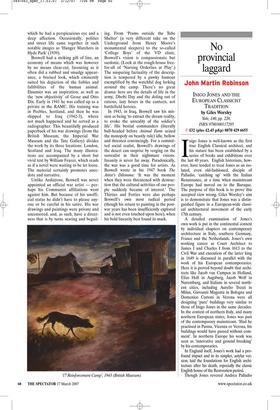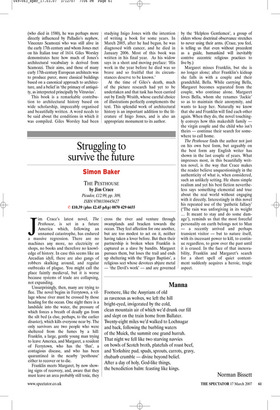No provincial laggard
John Martin Robinson
INIGO JONES AND THE EUROPEAN CLASSICIST TRADITION by Giles Worsley Yale, £40, pp. 220, ISBN 9780300117295 ✆ £32 (plus £2.45 p&p) 0870 429 6655 Inigo Jones is well-known as the first true English Classical architect, and his stature has been established by a series of books and exhibitions over the last 40 years. English historians, however, have tended to treat Jones as an isolated, even old-fashioned, disciple of Palladio, ‘catching up’ with the Italian Renaissance, at a time when mainstream Europe had moved on to the Baroque. The purpose of this book is to prove this accepted view wrong. Giles Worsley’s aim is to demonstrate that Jones was a distinguished figure in a European-wide classical architectural movement of the early 17th century.
A detailed examination of Jones’s own work is put in the continental context by individual chapters on contemporary architecture in Italy, southern Germany, France and the Netherlands. Jones’s own working career as Court Architect to James I and Charles I from 1613 to the Civil War and execution of the latter king in 1649 is discussed in parallel with the work of his European contemporaries. Here it is proved beyond doubt that architects like Jacob van Campen in Holland, Elias Holl in Augsburg, Jacob Wolf in Nuremburg, and Italians in several northern cities, including Aurelio Trezzi in Milan, Giovanni Magenta in Bologna and Domenico Curtoni in Verona were all designing ‘pure’ buildings very similar to those of Inigo Jones in the same decades. In the context of northern Italy, and many northern European states, Jones was part of the contemporary mainstream. ‘Had he practised in Parma, Vicenza or Verona, his buildings would have passed without comment’. In northern Europe his work was seen as ‘innovative and ground breaking’ by his contemporaries.
In England itself, Jones’s work had a profound impact and in its simpler, astylar version, laid the foundations for English architecture after his death, especially the classic English house of the Restoration period.
Though Jones revered Andrea Palladio (who died in 1580), he was perhaps more directly influenced by Palladio’s nephew, Vincenzo Scamozzi who was still alive in the early 17th century and whom Jones met on his Italian tour of 1614. Giles Worsley demonstrates here how much of Jones’s architectural vocabulary is derived from Scamozzi. Their aims, and those of many early 17th-century European architects was to produce purer, more classical buildings based on a canonical approach to architecture, and a belief in ‘the primacy of antiquity, as interpreted principally by Vitruvius’.
This book is a remarkable contribution to architectural history based on wide scholarship, impeccably organised and beautifully written. A word needs to be said about the conditions in which it was compiled. Giles Worsley had been studying Inigo Jones with the intention of writing a book for some years. In March 2005, after he had begun, he was diagnosed with cancer, and he died in January 2006. Most of this book was written in his final year. As his widow says in a short and moving preface: ‘His work in the year before he died was so brave and so fruitful that its circumstances deserve to be known.’ At the time of Giles’s death, much of the picture research had yet to be undertaken and that task has been carried out by Emily Wraith, whose careful choice of illustrations perfectly complements the text. This splendid work of architectural history is an important addition to the literature of Inigo Jones, and is also an appropriate monument to its author.



































































































 Previous page
Previous page